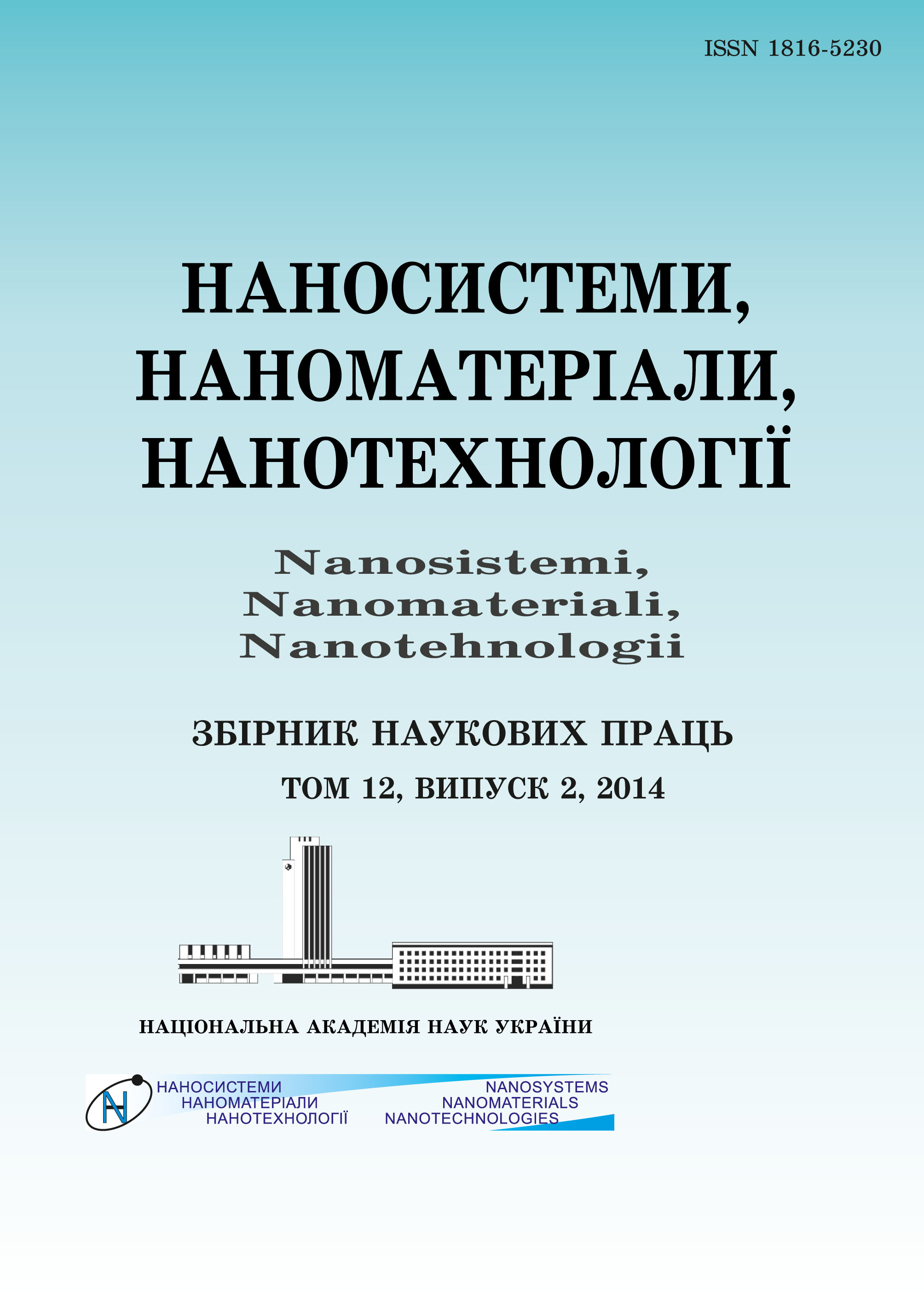|
|
|||||||||

|
Year 2025 Volume 23, Issue 2 |
|
|||||||
|
|||||||||
Issues/2025/vol. 23 /issue 2 |
|
Atyaf S. AL RAWAS1, Enas G. YONIS1, and A. J. JARJEES ALSOOFY2
1College of the Dentistry, Department of the Basic Science, Mosul University, Mosul, Iraq
2College of Science, Department of Physics, Mosul University, Mosul, Iraq
Study of Characteristics of Semiconductor GaAs Nanoparticles Prepared by Laser Ablation Method
515–521 (2025)
PACS numbers: 07.60.Rd, 78.20.Ci, 78.40.Fy, 78.67.Bf, 79.20.Eb, 81.16.Mk, 82.70.Dd
Gallium arsenide GaAs nanoparticles are prepared in water using laser ablation method. The optical properties and energy gap of the colloidal solution are investigated using UV-visible spectrometer; the absorption peaks are observed between 200 and 300 nm wavelength, and the energy gap is calculated of about 1.86 eV. Zeta potential value is of about 22.18 mV that gives the impression of acceptable stability of the colloidal solution.
KEY WORDS: gallium arsenide GaAs, laser ablation, zeta potential, optical properties of GaAs
DOI: https://doi.org/10.15407/nnn.23.02.0515
REFERENCES
- J. Kleperis, J. Zubkans, and A. R. Lusis, Optical Organic and Semiconductor Inorganic Materials, 2968: 186 (1997); https://doi.org/10.1117/12.266832
- S. Bayda, M. Adeel, T. Tuccinardi, M. Cordani, and F. Rizzolio, Molecules, 25, Iss. 1: 112 (2020); https://doi.org/10.3390/molecules25010112
- D. Sundaram, V. Yang, and R. A. Yetter, Progress in Energy and Combustion Science, 61: 293 (2017); https://doi.org/10.1016/j.pecs.2017.02.002
- J. Zhang, M. Terrones, C. R. Park, R. Mukherjee, M. Monthioux, N. Koratkar, and A. Bianco, Carbon, 98, Iss. 70: 708 (2016); https://doi.org/10.1016/j.carbon.2015.11.060
- P. A. Patil, S. Dalvi, V. Dhaygude, and S. D. Shete, Indo Global Journal of Pharmaceutical Sciences, 12: 183 (2022); https://doi.org/10.35652/IGJPS.2022.12022
- M. Kichu, T. Malewska, K. Akter, I. Imchen, D. Harrington, J. Kohen, and J. F. Jamie, Journal of Ethnopharmacology, 166: 5 (2015); https://doi.org/10.1016/j.jep.2015.02.053
- A. Ramazan and H. Misak, Journal of Nano Education, 3, Iss. 1–2: 13 (2011); https://doi.org/10.1166/jne.2011.1012
- L. M. Abduljabbar, Iraqi Journal of Laser, 13: 29 (2014); https://doi.org/10.31900/ijl.v13iA.71
- T. Sharifi, D. Dorranian, and M. J. Torkamany, Journal of Experimental Nanoscience, 8, Iss. 6: 808 (2013); https://doi.org/10.1080/17458080.2011.608729
- K. Satoh, Y. Kakehi, A. Okamoto, S. Murakami, K. Moriwaki, and T. Yotsuya, Thin Solid Films, 516, Iss. 17: 5814 (2008); https://doi.org/10.1016/j.tsf.2007.10.055
- T. Amakali, L. S. Daniel, V. Uahengo, N. Y. Dzade, and N. H. de Leeuw, Crystals, 10: 132 (2020); https://doi.org/10.3390/cryst10020132
- R. H. AL-Saqa and I. K. Jassim, Digest Journal of Nanomaterials & Biostructures, 18, No. 1: 165 (2022); https://doi.org/10.15251/DJNB.2023.181.165
- S. Ajith, F. Almomani, A. Elhissi, and G. Husseini, Helyion, 20, Iss. 9: 1 (2023); https://doi.org/10.1016/j.heliyon.2023.e21227
 This article is licensed under the Creative Commons Attribution-NoDerivatives 4.0 International License ©2003 NANOSISTEMI, NANOMATERIALI, NANOTEHNOLOGII G. V. Kurdyumov Institute for Metal Physics of the National Academy of Sciences of Ukraine. E-mail: tatar@imp.kiev.ua Phones and address of the editorial office About the collection User agreement |